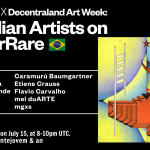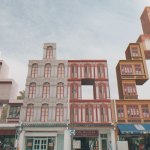The interview is conducted as part of the SuperRare April Exhibition: Invisible Cities, curated by an and Elisabeth Johs.
Dangiuz, pseudonym of Leopoldo D’Angelo, is an Italian contemporary visual artist, crypto artist, art director and graphic designer specialising in sci-fi and retro-futuristic themes.
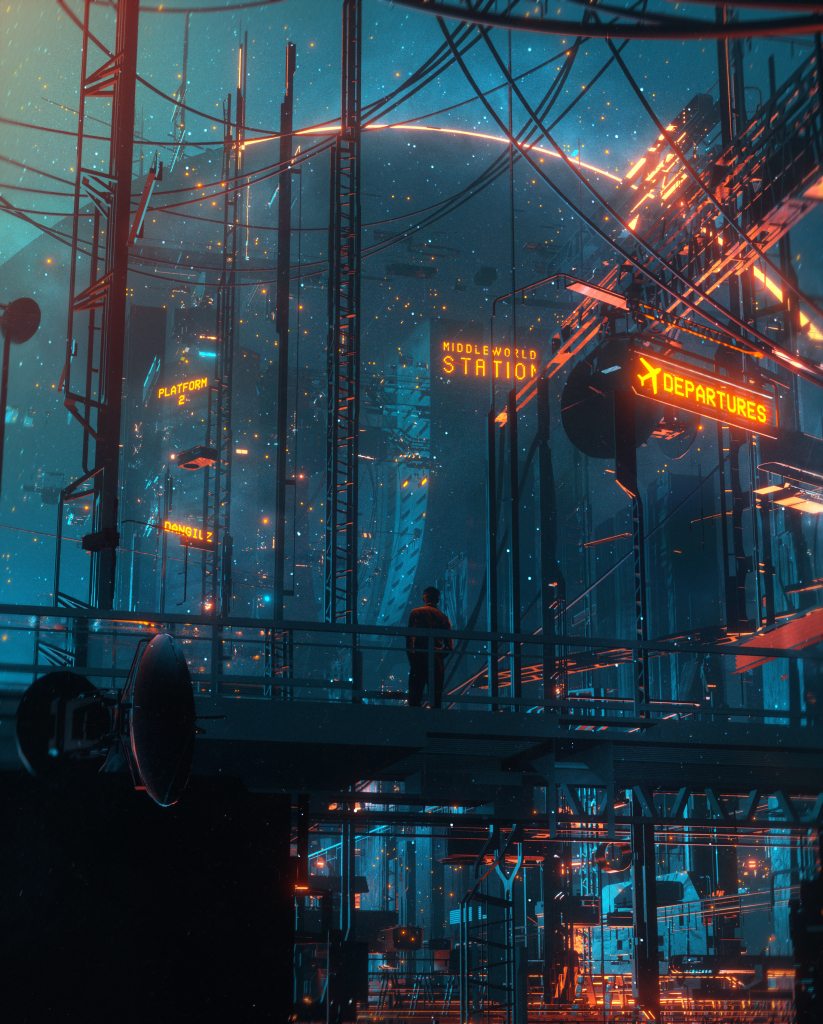
Edition 1 of 1
Middleworld: a place that exists only in people minds, when they’re about to make a change. That middle ground connecting two worlds. You either go back or go through… You can’t stay here.
A. Describe the cities in your art
The cities in my art are literally everything. It’s what people look at, and it depicts the immensity of the city, the evolution, the technology around us.
B. How did you become interested in using cities as the subject of your art? Which aspects of cities fascinate you the most?
My work is heavily inspired by Cyberpunk and Sci-Fi cultures in general, so I enjoy both the cyber/android side, but mostly the City side. I think the Cities, in general, represent the evolution of technology better than anything else and that’s what fascinates me.
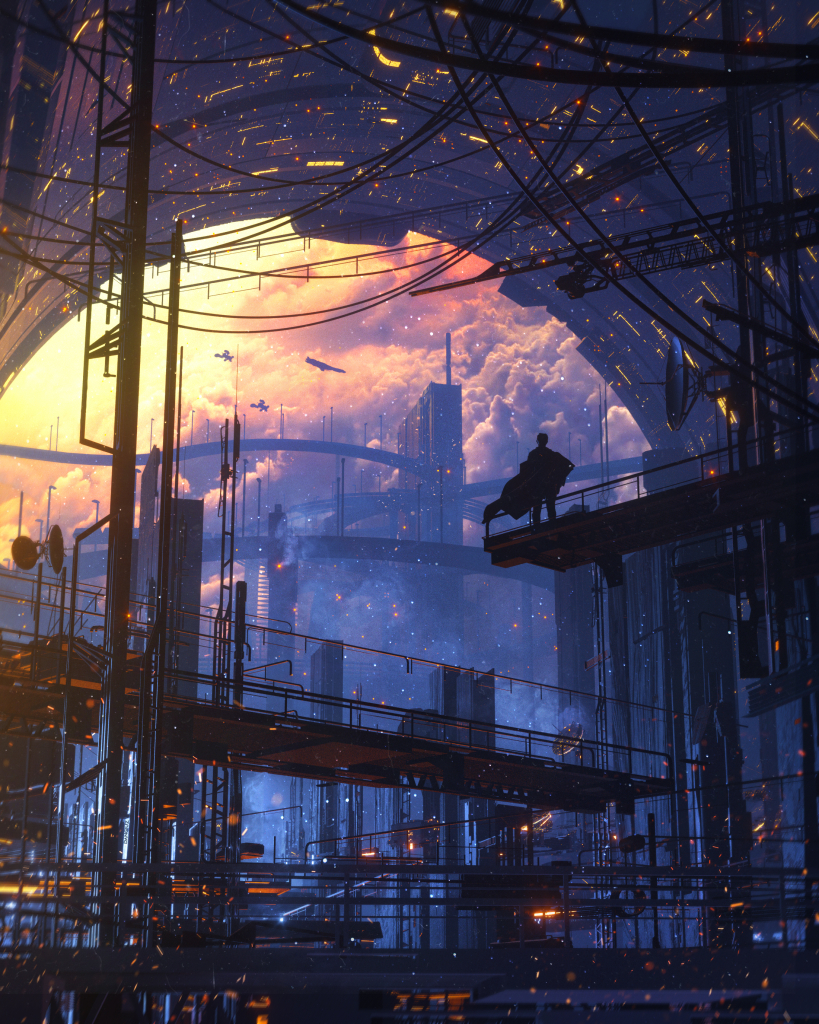
Edition 1 of 1
Wounds are on the inside, not on the outside: when you’ve been fighting for all your life, Peace of mind is the only thing you want to achieve.
C. What do cities mean for you?
Everything. It’s the thing I’ve been loving doing the most, since I discovered 3D art.
D. Which are your favorite cities? How do these cities inspire you and influence your art?
Tokyo, Milano, New York, Shanghai. Their technology and vanguard makes me wonder what they could become in 100 years.
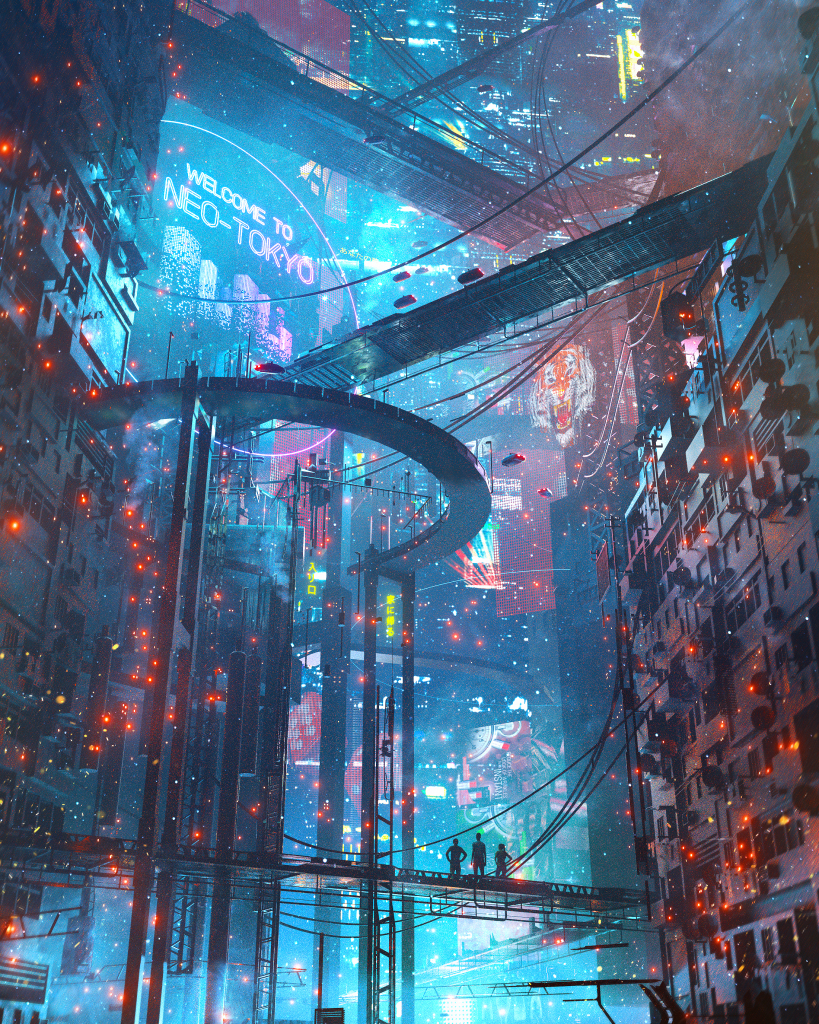
Edition 1 of 1
The most dangerous place to spend nights at, in an oppressive society dominated by computer technology and big corporations, where crimes go unpunished. These are the “Suburban Nights”.
E. What are you trying to express through depiction of cities? In portraying cities, what are the (bigger or personal) stories you’re trying to tell?
I’m trying to somehow depict both positive and negative aspects of huge technology in futuristic cities. For instance, no nature is surely a negative thing, and you almost never get to see nature in my pieces. On the other hand, you have huge technology, huge evolution, and every sort of thing you could ever imagine, or need.
F. What’s your approach to make art about cities (creative process, technique, art genre, aesthetics etc.)
I usually start with mixing different assets from different projects, and then tend to multiply them and mix them up. Then I light the scene and try to end up with a very futuristic and not-realistic city.

Edition 1 of 1
“Melancholia” (from Greek: µέλαινα χολή) is a concept that describes a condition characterized by markedly depressed mood, bodily complaints, and sometimes hallucinations and delusions.
G. What does your ideal city look like? Or, for artists who do futuristic cities: what’s your philosophy considering urban designs for a future city?
I believe impracticability is the key word for my cities: they look cool, but if you look closely, nobody could or would ever want to live there.
H. What’s the relationship between people and cities (or nature and cities) in your art?
The relationship is usually a feeling of nostalgia/melancholy, which kinda makes us understand that it’s completely fair and possible to feel alone even in such a HUGE city.
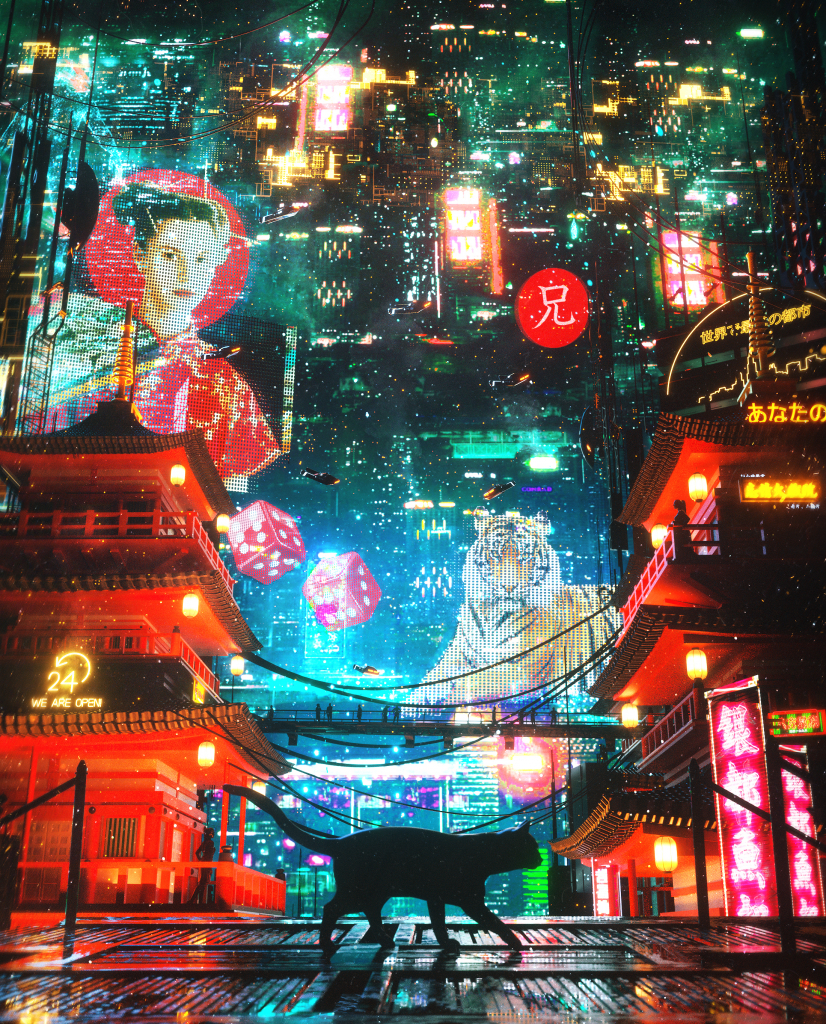
Edition 1 of 1
Everyone does what they have to to get by. Hard when you are a lonely cat in a corrupted suburb. Not for me, though.
I. What are the little things you want your viewers to notice in your art?
What I think people already notice is the little easter eggs. I often feature the same details over and over again: a cat, the hologram of dices and the hologram of the tiger.
J. What’s your dream art project to do?
Making a movie.
SuperRare is a marketplace to collect and trade unique, single-edition digital artworks.


